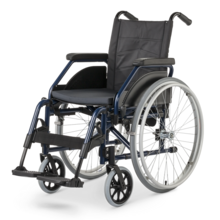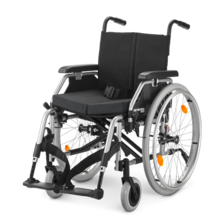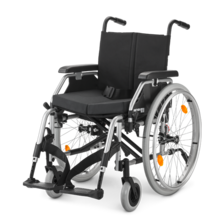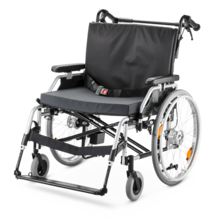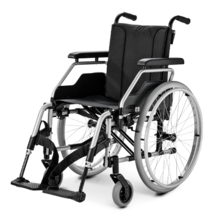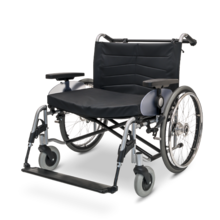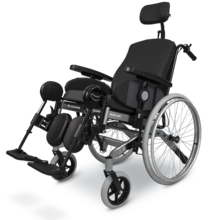The hemiparesis/hemiplegia is a one-sided paralysis in a spastic form, seldom in a floppy form. The occurence of motor restriction (arm- or leg-empahsised Hemiparese) depends on the location and seriousness of the brain damage. In almost all cases, it comes to wheelchair dependence. Because the healthy half of the body compensates (e.g. increased use of strength), this strengthens the spasticity. In addition, sensitivity disturbances, spatial vision or own body related perception disturbances, visual and linguistic disturbances (Aphasia) can appear.
Wheelchair requirements
- Only an optimal adjusted wheelchair allows a controlled use of the aid and reduces the spasticity. Adaptive wheelchairs offer the best possibilities.
- A further mode of movement often used is powering the wheelchair with the healthy leg and arm (Shuffling). It is therefore necessary to adapt the seat height and depth (accordingly) to the body size.
- The sitting position must be stabilised during shuffling in order to reduce bad posture due to slipping forwards and asymmetries. Therefore,a choice of adaptable seat and backrest systems should be offered.
- The wheelchair must be manoeuvrable with little use of strength.
- Single-hand control of operating elements like armrests, legrests or optional brakes (brake lever extension on the paralysed side)
- Straightforward mechanisms must be guaranteed.
- Options for care persons (height-adjustable push handles, quick release axles, drum brakes, etc.) must be options for the models.
- Height-adjustable armrests for resting the affected arm are almost always a must.
- Therapy table (perspex/acrylic glass) or arm resting shells can offer further special types of resting. E.g. with dislocated, painful shoulders
- Mobility by car by way of easy folding/unfolding, low weight and easy loading of the wheelchair.
